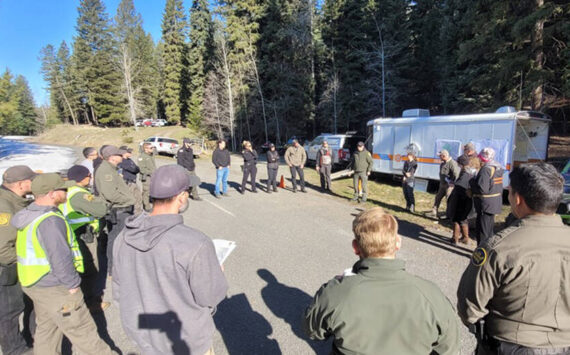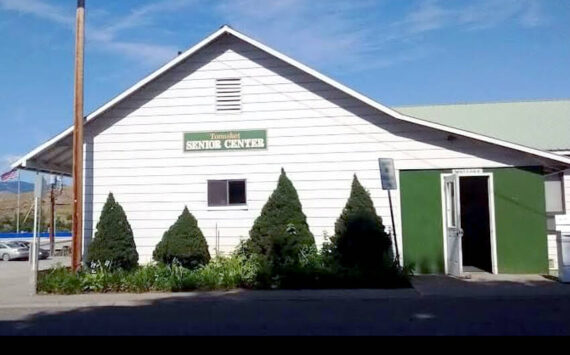OROVILLE – Oroville City Planner Kurt Denison reviewed the proposed Revised Zoning Code with the city council at their Tuesday, May 18 meeting.
“We’ve gone through it and we’ve tried to meet our obligations in terms of being able to provide for housing and to some extent, where we allow housing it’s a little more relaxed than it was before,” said Danison, who projected the Revised Zoning Code on the wall so those in attendance could follow along as he went through it.
“As we go through it, I think it is important as I’ve pointed out, that you make sure that it provides for house and it goes on to preserve the character of our neighborhoods. We also have to justify that by changing zones it is satisfied by that change. We also need to ensure the property owners in these zones are being respected concerning the investments they have made. We need to make sure that we are not creating zones with incompatible uses putting citizens and families at risk. We need to also make sure the quality of uses within the zones is enforceable to established standards. And we need to make sure the city’s infrastructure is capable of supporting what we are trying to do,” said Danison.
Danison added that Oroville is not subject to the state’s Growth Management Act (GMA) which affects communities within counties with a population of 50,000 or more.
“There are some parts of the Growth Management Act that we are required to do. As many of you recall we went through the Critical Management Areas update a few years ago. That’s a Growth Management requirement, but that’s about it in terms of what we have under growth management,” said Danison.
The planner said they were trying to maintain existing land use and that he understood the mayor and council had received copies of the land use map.
“It did change, but not substantially from what we had before. It changed enough that the zoning map will be revised accordingly. Probably some of the biggest changes are that we reduced the Urban Growth Boundary and we no longer have single-family zoning in the city. The single-family zoning for the unincorporated area, when it comes in is lower density and so a lot of what is R1 will become R2. And then we modified some of the commercial designations to be more compatible with what is going on in the city today,” Danison said.
The planner said that much of the conversation he had with Mayor Ed Naillon the previous day had to do with accessory dwelling units.
“There are significant changes in the code as far as accessory dwelling units are concerned. There are two big changes. The present code only allows accessory dwelling units that are incorporated into the main structure, that are attached. The changes to the code would allow detached accessory dwelling units,” said Danison, who added another change was the resident of the accessory dwelling did not have to be related to the resident of the main structure.
“Having the people in the accessory dwelling needing to be related is really, really hard to enforce, I don’t even know how you would go about enforcing it. So, we eliminated that provision,” said Danison.
As far as limitations on size, Danison said currently the minimum home size anywhere in town for a single-family residence is 800 square feet.
“Accessory dwellings would be limited to a minimum 300 square feet. They all have to comply with the zoning in that district. You must have at least three parking spaces, two for your single-family home and one for the accessory dwelling,” he said.
“Before we move on from accessory dwellings, in our conversation yesterday there were a couple of other things. One is the owner doesn’t even have to occupy the primary dwelling. So, these could be two rentals,” said Mayor Naillon. “Another thing you clarified for me that I assume you’re going to put in the document somewhere, is we are limited to one accessory dwelling unit per lot.”
Danison said that was true.
“When you said 300 is that the minimum size?” asked the mayor.
Danison said that was the minimum, but it could be larger.
“The reason we talked about it was that in the old code, the minimum was 190 square feet, but it was attached and part of the existing structure. But when you pull those out and separate them, we thought they should be a little bit larger and that would preserve the character of the residential zone aesthetically and help respect the investment the other folks have made in all of the district,” said Naillon.
The mayor said that Danison had also assured him that all accessory dwelling units would be built to the state building code on permanent foundations.
“Those were my main concerns because I didn’t want to see a bunch of little trailers pulled into a lot. If done correctly it does help satisfy the need that we have, which is quality housing for individuals,” said the mayor.
Danison will be making changes to the revised zoning code and submitting the plan for SEPA (State Environmental Protection Act) review. Then, there will be a public hearing at the planning commission before it will be submitted for adoption by the council.
The council approved a park use application submitted by Salley Bull regarding the use of Madeline Wells Park for the weekly Farmers’ Market. She also got approval for the use of the yard in front of the library for Art in the Park during May Festival on May 10
The Highland Community Support Coalition sent a letter to the city asking for support in their efforts to work on their building on Main Street, the home of the former 49 Degrees North Art Gallery. They are looking for the city’s support as they are applying for a substantial grant to bring art back to the building. The city will write a letter of support.
There was some discussion of what the city would like to see on the back side of the Okanogan County Tourism kiosk sign. The mayor said he would like a map emphasizing recreation possibilities in the area, like the trailheads, the Sno-Parks, the various lakes and the ski hill, among others.
Under Department Head Updates, Police Chief Gary Hirst said that he had one officer going on maternity leave, but the department would be able to cover his absence. He also said another officer would attend a Use of Force training at $340 per student.
Steve Thompson, Superintendent of Public Works, requested that Spring Cleanup be scheduled for April 9. He said he encouraged people to call the city to arrange a pick up of materials. The city no longer accepts regular household garbage, tires, etc. Burnables (leaves, tree limbs, grass clippings, etc will be accepted although they must be separated and placed into cardboard boxes, paper or plastic bags. Limbs should be bundled for easy pickup. In addition to burnables, appliances and some metals will be picked up at no charge.
“We will take anything organic or metal. We encourage people to call us,” said Thompson, who added that the south end of town was looking better than it had in years.
The Oroville City Council meets the first and third Tuesday of each month at the council chambers at city hall. The next meeting is scheduled for Tuesday, April 8.








